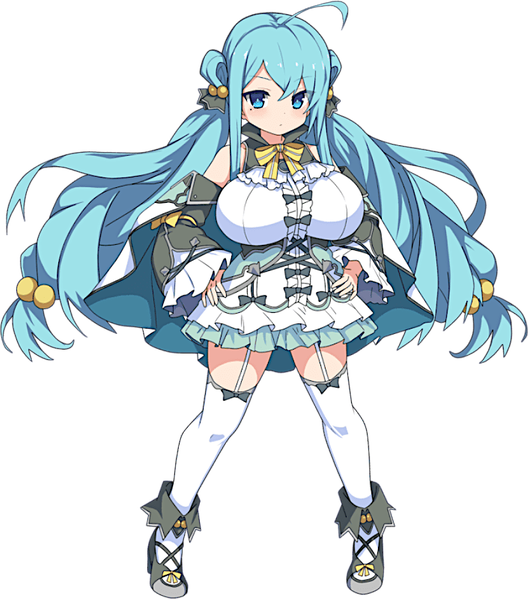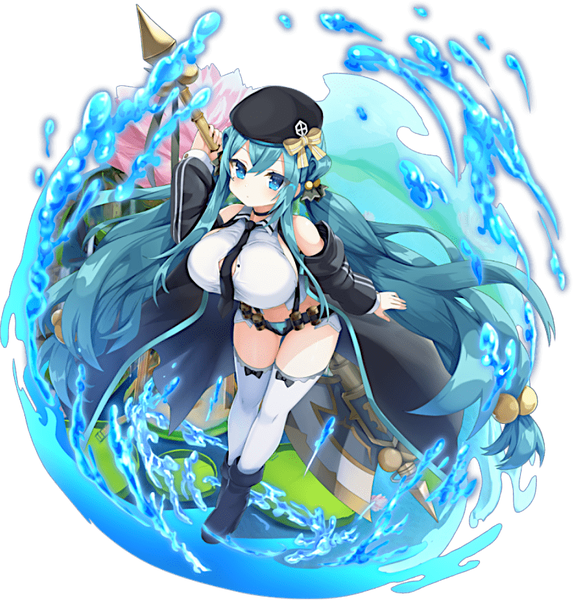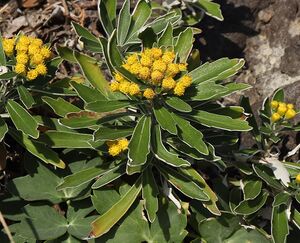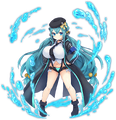
Isogiku
| Isogiku | |||||
|---|---|---|---|---|---|
| Japanese Name | イソギク | ||||
| Weapon | |||||
| Race | Flower Knight | ||||
| Nationality | |||||
| Birthday | Classified | ||||
| Constellation | Classified | ||||
| Talents | Swimming | ||||
| Likes | Fresh seafood dishes | ||||
| Dislikes | Barbeque | ||||
| Strengths | As fit as an adult | ||||
| Weaknesses | Tends to get too carried away when playing in the sea or lake | ||||
| Hobbies | Playing on the beach | ||||
I'm a Flower Knight, they call me Isogiku. My specialty's swimming, so I hope I can train swimming with you all in the seas of Iris Cloud... Can you please not stare at me in my swimming costume...?
Layers
| Icon | Title | Release Date | Where to Obtain |
|---|---|---|---|
| [Kind-Hearted and Shy Person] Isogiku | 2024 April 24 | [Altar of Judgement - Skorskoville] Login Bonus | |
| [The Blue Blur on the Lake] Isogiku | 2024 April 24 | [Altar of Judgement - Skorskoville] Event Reward | |
| [Serene Beauty Blooming in Flamarine] Isogiku | 2024 April 15 | [Proelium Beyond the Mist] Collab Gacha |
Owned Skills
Trivia
- Isogiku, also called Chrysanthemum Pacificum or Gold Chrysanthemum, is a character from Flower Knight Girl, another game that is owned by KMS, the company that publishes Mist Train Girls.
- Shirotaegiku's hanakotoba is "Neat beauty", and "Quiet joy".
Counterpart
Chrysanthemum pacificum, commonly called gold and silver chrysanthemum, is a species of flowering plant in the aster family. It is native to Japan, where it is endemic to the island of Honshu. Its natural habitat is along the Pacific coast, where it often grows on ocean cliffs. The Japanese name derives from the fact that it is a chrysanthemum that grows on the seashore.
Older Japanese names are rock chrysanthemum and foam chrysanthemum. It has been cultivated since ancient times and is often used as a kimono for chrysanthemum dolls because of its small flowers. It is widely cultivated as an ornamental plant.
It is a showy plant, blooming in late fall and producing yellow heads of flowers. It was introduced into U.S. gardening catalogs in 1989, and has been in cultivation in Japan since an early date.
Pacific chrysanthemum spreads in all directions with elongated underground stems. Height of the plant is around 30-40cm, stems are clustered, curved and oblique, with silvery-white hairs on top, densely leafed to the top. Leaves are thick, about 4-8 cm long, 1.5-2.5 cm wide, inverted-lanceolate-ovate, slightly shallowly lobed or unbroken on the upper half, and wedge-shaped at the base. Plant surface is almost hairless, green with glandular dots, margins white, underside silvery-white with dense Ding-like hairs.
Flower crowns are yellow, densely crowded, consisting only of yellow tubular flowers, ca. 5 mm in diameter; marginal male corolla 3 mm long, with 3-4 teeth at the tip; inner bisexual flowers 3.5 mm long, with 5 teeth at the tip; outer male corolla 3.5 mm long, with 3-4 teeth at the tip. Total bracts are hemispherical, bracteoles in 3 rows. Outer bracts ovoid, shorter than inner bracts, with white hairs. Fruit is a sessile berry, 1.5 mm long, with 5 ribs.
Gallery
- Pages using Tabber parser tag
- Pages using DynamicPageList3 parser tag
- Weapon Axe
- Flower Knight
- Others
- Classified
- Element Cut
- Element Water
- Flower Knight Girl
- Flower









